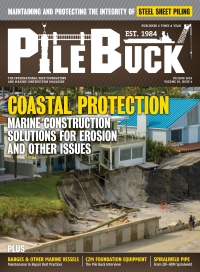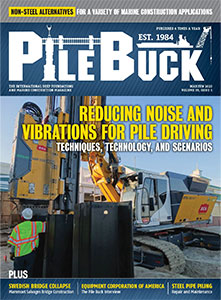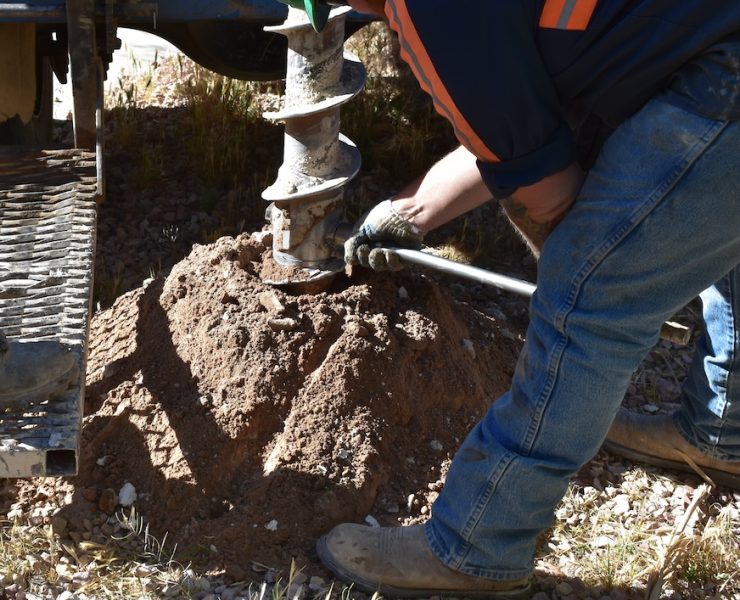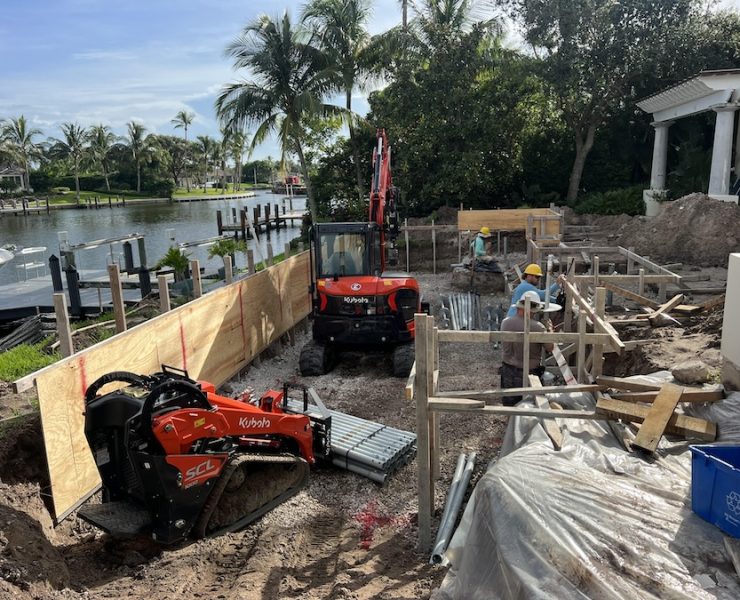Pile Installation Tips to Reduce Contractor Stress
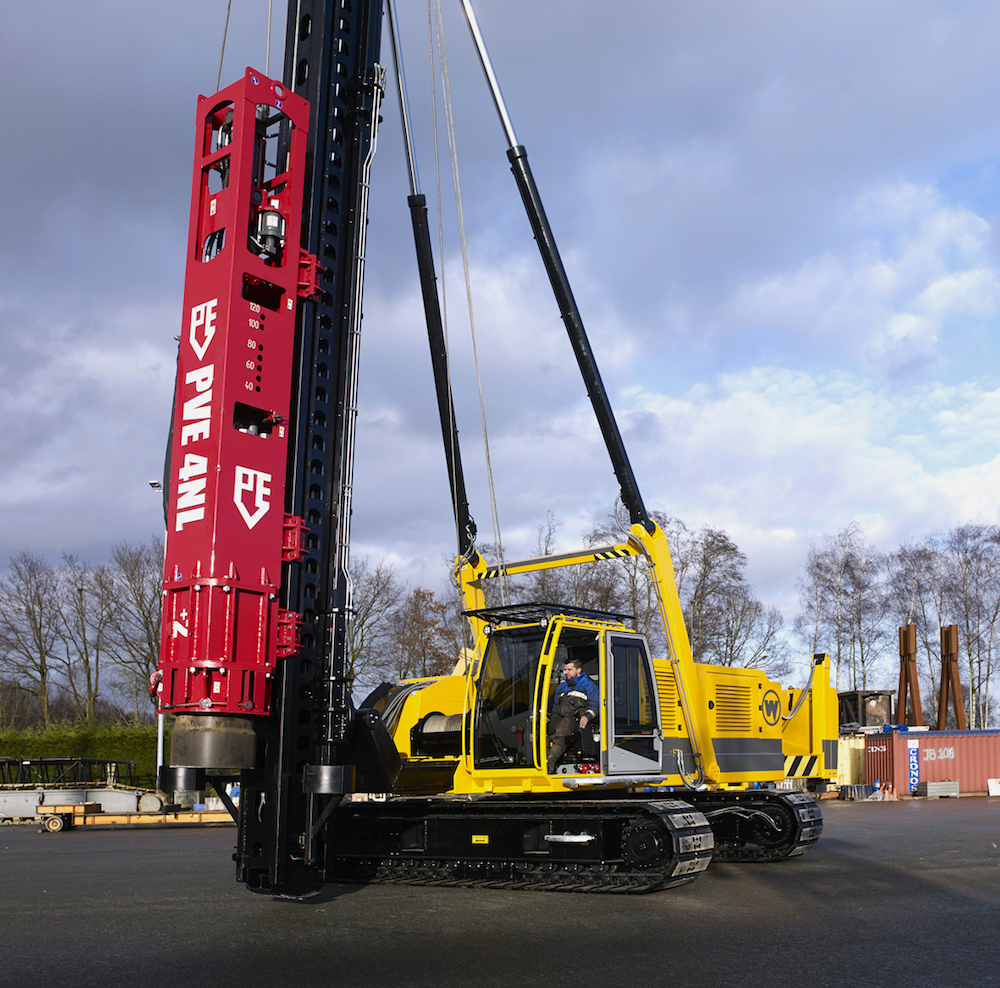

Pile Installation Tips To Reduce Contractor Stress
Effective pile driving installation hinges on a contractor’s adherence to a variety of operating practices which vary, depending on the type of piles being installed.
Overall, the stroke of the ram is a vital parameter to monitor during driving.
If the stroke is noticeable from the outside of the hammer, visual monitoring is achievable. With an open-type air or steam hammer, the ram wipes lubricant off of columns as it moves. The length of the wiped area determines the hammer’s stroke. A striped pole can also be mounted on top of open-end diesel hammers to determine the stroke, with the ram’s maximum height being compared to the highest point of the ram rising.
If visual monitoring is unfeasible, devices exist that determine the energy output of the hammer. If utilizing such equipment, ensure that the device is properly installed, calibrated, and operated by experienced personnel.
Signs of overstress, this being the prime cause of pile damage, should also be closely monitored during installation. Overstress typically occurs when too large a hammer is utilized, when the pile and hammer are misaligned, when an insufficient cushion is provided, or when equipment malfunctions.
Concrete Piles: Precast and Prestressed
Guidelines for proper concrete pile installation are numerous, and dependent on pile length and depth, along with the soil conditions encountered. Below are common, pertinent practices to follow:
- Use adequate cushioning between the driving head and pile to control driving stresses. Four inches of material is often adequate for short piles with moderate toe-soil resistances. Six to 20 inches of cushioning may be required when driving longer piles in extremely soft soil.
- Use a heavy ram with a short stroke to reduce driving stresses and obtain the desired driving energy. Avoid using a light ram with a large stroke.
- During early driving, reduce the ram stroke when lower soil resistance is reached.
- At the first sign of soft driving, reduce the stroke to avoid tensile stresses.
- Avoid jetting at or below the toe of the pile, which can reduce toe resistance.
- Ensure the driving head fits loosely around the pile head, allowing the pile to rotate with ease.
- Check that bearing piles are straight and not cambered from uneven prestress or poor concrete placement.
- Confirm the head of the pile is square or perpendicular to the longitudinal axis of the pile.
- Ensure that no reinforcing strands protrude from the pile head.
- Use acceptable spiral reinforcement throughout the pile, with a focus on the head and toe.
Damaged easily by obstructions and overdriving, wood piles must be supported at their midpoints with a sliding pile guide.
When wood piles show a tendency to rupture, contractors can reduce splitting by:
- Reinforcing a pile’s toe, head, and places of damage with wire or steel straps;
- Chamfering the pile head on a 45-degree bevel;
- Driving a steel ring manufactured from O.D. pipe into the head of a pile.
The handling and driving of creosoted wood piles can equate to skin and eye burns for workers, heightening the importance of rubber gloves, eye protection, and long-sleeved clothing.
Sheet Piles
Successful installation of retention and excavation supports is achieved through a variety of procedures. It is recommended that contractors:
- Review soil borings data and documents, noting driving conditions and underground obstacles.
- Inspect your pile sheets, working only with undamaged, straight ones. Inspect all sheets for excessive camber of sweep.
- Ensure interlocks are free of dirt, sand, mud, and other debris.
- Set up a template system that will keep sheet pile plumb when obstructions or excessive driving conditions are encountered. A two-level template or wale system is suggested, with a front and back wale system recommended when driving deeper walls.
- Lift sheets properly, utilizing handling holes and pick-up points.
- Ensure that the crane boom length is at least twice the length of the sheets being driven.
- Drive sheets with the male interlock, ball, or thumb leading, eliminating the development of a soil plug.
- Insert a bolt or other object at the bottom of a sheet when driving with the female or socket end leading. This will keep the interlock free of soil and other debris.
- Ensure that all jaw teeth are on the sheet prior to clamping and driving with a vibratory driver.
- Ensure that any impact hammer being utilized has the proper head for the type of sheet being driven. Confirm that the hammer is centered on both sheets prior to driving.
- Drive sheets in pairs whenever possible.
- Let a sheet freefall when threading.
- Periodically pause to check that sheets are plumb, and especially when threading, aligning, and driving the last pair.
- Drive sheets in consecutive short lengths until the desired depth is obtained.
- Look for signs of overdriving during operations, i.e. sheets bending, bouncing, or vibrating without penetration.
- Stop driving when a sheet collides with an obstruction.
- Never rush a pile foreman.
Driving Aftermath
Immediately after driving operations, the location and elevation of each pile should be documented, with a complete pile driving record prepared. These documents will provide important data related to soils penetrated, soil disturbance, and penetration resistance.
When lateral movement is noted, the project’s engineer must be alerted. If an upward pile heave of more than 6 millimeters is observed, a pile should be re-driven, with damaged piles extracted via a crane or vibratory hammer and replaced.
Type of pile aside, the progress of driving operations typically steers the overall advancement of a deep foundation project. Adherence to the brief lists of recommendations above should prove vital to any superintendent looking to avoid complications, cost increases, and delays.
What is the complete pile driving record document?
For each driving operation of pile, it is advisable to document proper information of pre-construction and during contruction phase of pile driving. The complete pile driving record should include the location and the elevation of pile, pre-site visit details, tool/machine information, geotech boring log information vs encountered, soil penetration, soil resistance, any discrepencies, final dimensions, soil/concrete sample report











